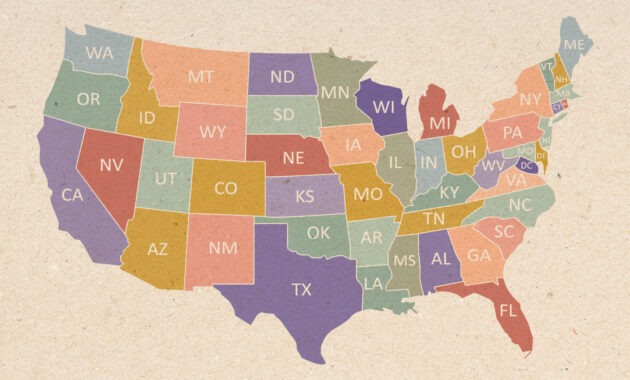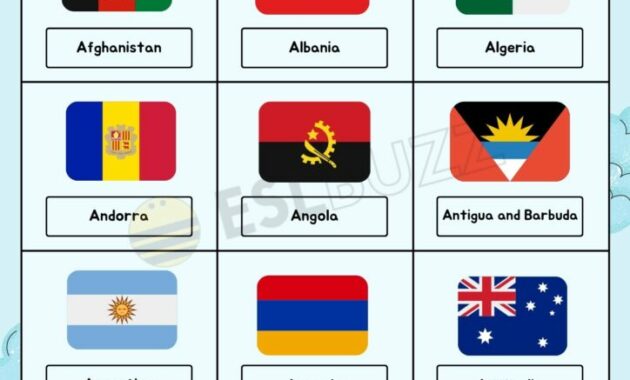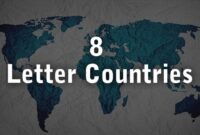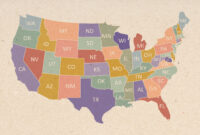Ah, friends, let us gather ’round and embark on a journey of understanding, a voyage across the intricate landscapes of global commerce and political tides. Today, we delve into the fascinating, sometimes perplexing, world of embargoed and sanctioned countries. Think of it as navigating a complex maze, where each turn reveals a new layer of economic and political considerations. This isn’t just about lines on a map; it’s about the lives of people, the flow of goods, and the delicate balance of power on the world stage.
Embargoed and Sanctioned Countries: A World of Restrictions

Embargoes and sanctions, you see, are like intricate webs woven from international laws and political strategies. They represent a powerful tool, wielded by nations and international bodies to influence the behavior of other nations. An embargo, in its essence, is a complete or partial prohibition of trade with a specific country. Imagine a bridge being closed, preventing the flow of goods and services. Sanctions, on the other hand, are a broader range of measures, encompassing financial restrictions, travel bans, and arms embargoes. They are like targeted strikes, aimed at specific sectors or individuals within a country.
Now, why would countries resort to such measures? Well, the reasons are manifold. It could be to address human rights violations, to counter terrorism, to prevent nuclear proliferation, or to resolve territorial disputes. Think of it as a form of international pressure, an attempt to nudge a nation towards a more desirable path. However, the effectiveness of embargoes and sanctions is a subject of much debate. Some argue that they can be a powerful force for positive change, while others contend that they disproportionately harm innocent civilians and can even be counterproductive, strengthening the resolve of the targeted regime.
The impact on the targeted countries can be profound. Businesses struggle, economies contract, and everyday citizens face hardship. Imagine trying to run a business when you can’t import essential materials or export your products. It’s like trying to build a house with one hand tied behind your back. Access to essential goods and services can become scarce, leading to increased prices and a decline in living standards. This can create a climate of resentment and instability, further complicating the situation.
Furthermore, the ripple effects of embargoes and sanctions can extend far beyond the targeted country. Companies in other nations that trade with the targeted country may suffer losses. Supply chains can be disrupted, leading to shortages and price increases in other parts of the world. It’s like throwing a pebble into a pond; the ripples spread outwards, affecting everything in their path. Therefore, the decision to impose embargoes and sanctions is never taken lightly. It requires careful consideration of the potential consequences, both intended and unintended.
Navigating this complex landscape requires a deep understanding of international law, political dynamics, and economic realities. It’s not simply about drawing lines on a map; it’s about understanding the human impact of these policies and striving to find solutions that promote peace, stability, and prosperity for all.
OPEC Countries: Power, Oil, and Global Influence

Now, let’s shift our focus to another powerful force in the global arena: the Organization of the Petroleum Exporting Countries, or OPEC. This is an intergovernmental organization of 13 countries, founded in 1960 in Baghdad by Iran, Iraq, Kuwait, Saudi Arabia and Venezuela. These nations, you see, possess a significant portion of the world’s proven oil reserves. Imagine a group of friends who control the water supply to a town; they wield considerable influence over the town’s economy and well-being.
OPEC’s mission, as stated on its website, is to “coordinate and unify the petroleum policies of its Member Countries and ensure the stabilization of oil markets in order to secure an efficient, economic and regular supply of petroleum to consumers, a steady income to producers and a fair return on capital for those investing in the petroleum industry.” In simpler terms, OPEC aims to manage the supply of oil to the global market, influencing prices and ensuring a stable flow of revenue for its member countries.
Think of it as a balancing act. If OPEC produces too much oil, prices will fall, hurting the economies of its member countries. If it produces too little oil, prices will rise, potentially damaging the global economy. OPEC’s decisions, therefore, have far-reaching consequences, impacting everything from the price of gasoline at the pump to the profitability of airlines to the overall health of the global economy.
The power of OPEC stems from its control over a significant portion of the world’s oil supply. Oil, as you know, is the lifeblood of modern economies. It powers our transportation systems, fuels our industries, and heats our homes. Countries that rely heavily on oil imports are vulnerable to price fluctuations and supply disruptions. This gives OPEC considerable leverage in international affairs.
However, OPEC’s influence is not without its challenges. The rise of alternative energy sources, such as solar and wind power, is gradually reducing the world’s dependence on oil. Furthermore, some countries, like the United States, have significantly increased their own oil production, reducing their reliance on OPEC imports. These factors are chipping away at OPEC’s dominance in the global energy market.
The dynamics within OPEC itself can also be complex. Member countries have different priorities and interests, which can lead to disagreements over production quotas and pricing policies. Think of it as a group of siblings, all with different personalities and ambitions, trying to share a single inheritance. Reaching a consensus can be challenging, and sometimes conflicts arise.
Despite these challenges, OPEC remains a powerful force in the global economy. Its decisions continue to shape the energy landscape and influence the lives of billions of people around the world. Understanding OPEC’s role and its impact is crucial for navigating the complexities of the 21st century.
In conclusion, both embargoed and sanctioned countries and organizations like OPEC represent intricate pieces of the global puzzle. Their actions and situations have profound effects on international relations, economics, and the lives of countless individuals. By understanding these dynamics, we can gain a deeper appreciation for the complexities of our interconnected world and work towards building a more peaceful and prosperous future for all.
If you are searching about Embargoed and Sanctioned Countries – Research & Creative Achievement at you’ve visit to the right page. We have 5 Pictures about Embargoed and Sanctioned Countries – Research & Creative Achievement at like Embargoed and Sanctioned Countries – Research & Creative Achievement at, Us Embargoed Countries List 2025 – Janeta Aeriell and also Map Embargoed Countries Images: Browse 789 Stock Photos & Vectors Free. Here it is:
Embargoed And Sanctioned Countries – Research & Creative Achievement At

research.umbc.edu
countries sanctioned embargoed umbc compliance
Us Embargoed Countries List 2025 – Janeta Aeriell

jerryycorette.pages.dev
Ash 2024 Embargoed Countries – Eugine Shandra

pollyycherice.pages.dev
Map Embargoed Countries Images: Browse 789 Stock Photos & Vectors Free

www.shutterstock.com
Map Embargoed Countries Images: Browse 789 Stock Photos & Vectors Free

www.shutterstock.com
Countries sanctioned embargoed umbc compliance. Map embargoed countries images: browse 789 stock photos & vectors free. Map embargoed countries images: browse 789 stock photos & vectors free










